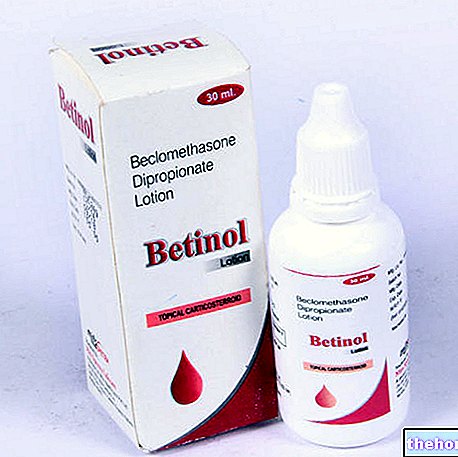Absorption is the first phase of a drug's journey into our body; it is the passage of the medicine from the administration site into the bloodstream. But what does our substance have to go through to get to the blood? Mainly it has to pass through cell membranes.
A cell membrane is nothing more than a phospholipid bilayer inside which there are wedged proteins that can take on different functions. A substance that must cross the cell membrane must be able to dissolve totally, or at least partially, in an oily phase. So if a molecule is very polar it cannot dissolve well in the oily phase, consequently it does not cross the cell membrane. If, on the other hand, the molecule is lipophilic it is trapped in the phospholipid membrane; to overcome these drawbacks, a solution must have both lipophilic and hydrophilic characteristics, so as to allow the drug molecule to pass the phospholipid layer, but also to remain inside the cell in an aqueous environment (intracellular liquid).
A molecule, to pass through a cell membrane, can take advantage of several ways:
- FILTRATION. Filtration is the easiest route of distribution and the molecules are able to pass through pores delimited by proteins present in the membrane. The transition can only take place if the molecules are small and hydrophilic. This route is the easiest, but it is also the least used. It is mainly exploited by ions.
- PASSIVE DIFFUSION. It is the main route used by drugs. The drug crosses the phospholipid double sheet of the membrane because it has characteristics of fat solubility such as to pass from the extracellular fluid inside the membrane and from the inside of the membrane to the intracellular fluid. The pharmaceutical product is able to pass because it has a lot of affinity with the components of the membrane. Diffusion is passive because the molecules are able to pass from the more concentrated part of the membrane to the less concentrated part without using particular forms of energy. This diffusion occurs according to the concentration gradient. It should be remembered that the molecules must have a certain degree of lipophilicity to be able to pass the cell membrane without problems.
- SPECIALIZED TRANSPORT. This transport is characterized by the use of particular carriers. These conveyors work as "shuttles" that load the drug on the external side of the membrane and transport it on the internal side. Once they have deposited it inside, they return to disposal on the external side. to hang up a new drug molecule. So, in a nutshell, they are transporters capable of carrying a molecule from one part of the membrane to the other. This system can work passively (respecting the concentration gradient), but in most cases the transporters require energy in the form of ATP.
- PINOCYTOSIS. The pinocytosis method is used in particular cases:
- with molecules that do not have specific carriers for transport;
- with very large molecules, which consequently fail to take advantage of passive diffusion.
Transport with pinocytosis consists in the formation of an "invagination of the cell membrane. From the" invagination, a small droplet containing the molecule will then form. This droplet will be transported inside the cell, where particular enzymes (lysosomal) will break up the membrane of the drop releasing the molecule in the intracellular environment.

A: passive diffusion: the passage is regulated by the degree of lipophilicity of the drug
B: channel diffusion
C: transporter-mediated diffusion
D: fluid phase endocytosis
E: receptor-mediated endocytosis
Passive diffusion
Let's now analyze passive diffusion specifically. This path has parameters that depend on the chemical-physical characteristics of the molecule and on the physiological, anatomical and pathological characteristics of the patient.
Among the chemical-physical characteristics of the molecule we find:
- MOLECULAR WEIGHT (PM), consists of the steric hindrance; that is, it represents the dimensions of a specific substance. The greater the molecular weight, the more hindered the passive diffusion (the larger the substance, the more difficult it will be to cross the membrane). The molecular weight is therefore inversely proportional to the passive diffusion capacity.
- THE DEGREE OF DISSOLUBILITY that is the ability of the active principle to dissolve in the extracellular fluid. The faster the molecule dissolves in the extracellular fluid, the faster it will be made available for passage through the membrane.
For example, if we take a syrup where we find the active ingredient already dissolved, this will pass faster through the membrane than the active ingredient that will be found in a capsule or tablet. The absorption rate will be proportional to the dissolution capacity. - DIFFUSIBILITY is a term that in turn includes other parameters and everything is explained with the FICK'S LAW.
dQ / dT = (D x Krip / e) x S (C1-C2)
dQ / dT = rate of diffusion (amount of drug absorbed in the unit of time)
D = diffusion coefficient (ability of the drug to diffuse according to its properties)
Krip = partition coefficient (i.e. whether the drug is more water-soluble or fat-soluble)
e = indicates the thickness of the membrane
S = indicates the surface of the absorption zone
(C1-C2) = indicates the concentration of the drug on the sides of the membrane.
The diffusion rate is directly proportional to D, Krip, S and (C1-C2). The diffusion rate is inversely proportional to e (membrane thickness). Therefore the more lipophilic the drug is (always within a certain limit) and the faster it diffuses through the membrane.
- LIPOSOLUBILITY consists in the breakdown of a molecule in an oily environment or in an aqueous environment, determining a difficulty or an advantage as regards the passage of the membrane. This ratio is called the oil / water partition coefficient.
PARTITION COEFFICIENT = [drug] in the oily phase / [drug] in the aqueous phase If> 1 the drug is lipophilic and spreads easily If <1 the drug is hydrophilic and does not spread easily
A drug to be absorbed by passive diffusion must be JUST LIPOSOLUBLE. - DEGREE OF DISSOCIATION which can be different at different pH. Remember that the pH is different depending on the areas of our body and that the drugs we take can be weak acids or weak bases. A weak acid or a weak base is in equilibrium with its dissociated and undissociated form. So we can say that the degree of dissociation is influenced by the pH of the environment in which the molecule is located.
The relationship that c "is between the degree of dissociation of the molecule and pH is described in the HENDERSON-HASSELBACH equation.
Other articles on "Absorption of a drug"
- Transcutaneous route of administration
- Absorption rate of a drug

.jpg)


























